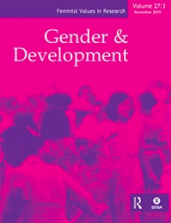New challenges for women workers in Brazil facing the wave of Industry 4.0 technologies

Overview
This paper aims to understand how women’s work tends to be particularly affected by the new wave of Industry 4.0 technologies in Brazil and how public policies could actuate to reduce work gender inequalities throughout this process. We examine the 20 largest occupations for women and cross-check with estimates of automation for the Brazilian labour market from previous studies. We also analyse the women’s insertion in professional fields that have great growth potential. Among the main occupations, we identify a dual trend with high automation chance for jobs that require low or no qualifications and are low paid, and low displacement probability for caring-related professions. Furthermore, even though in Brazil women have higher education levels than men, they are under-represented in STEM (Sciences, Technology, Engineering, and Mathematics) areas. We point out that the main challenges for Brazil include the lack of investment in innovation and that gender-aware policies should be designed to overcome structural barriers and guarantee an equal insertion of women and men. Paid parental leave, equal pay for equal work, and public health and education services are essential to overcome inequalities based on traditional gender roles. Unemployment insurance, financial support, and incentives for qualification and requalification, as well as gender parity in educational and research institutions, are key for women to have full involvement in this new digital economy.
Keywords
Additional details
Author(s)
Publisher(s)
Editor(s)
DOI
10.1080/13552074.2022.2125240How to cite this resource
Citation styles vary so we recommend you check what is appropriate for your context. You may choose to cite Oxfam resources as follows:
Author(s)/Editor(s). (Year of publication). Title and sub-title. Place of publication: name of publisher. DOI (where available). URL
Our FAQs page has some examples of this approach.
